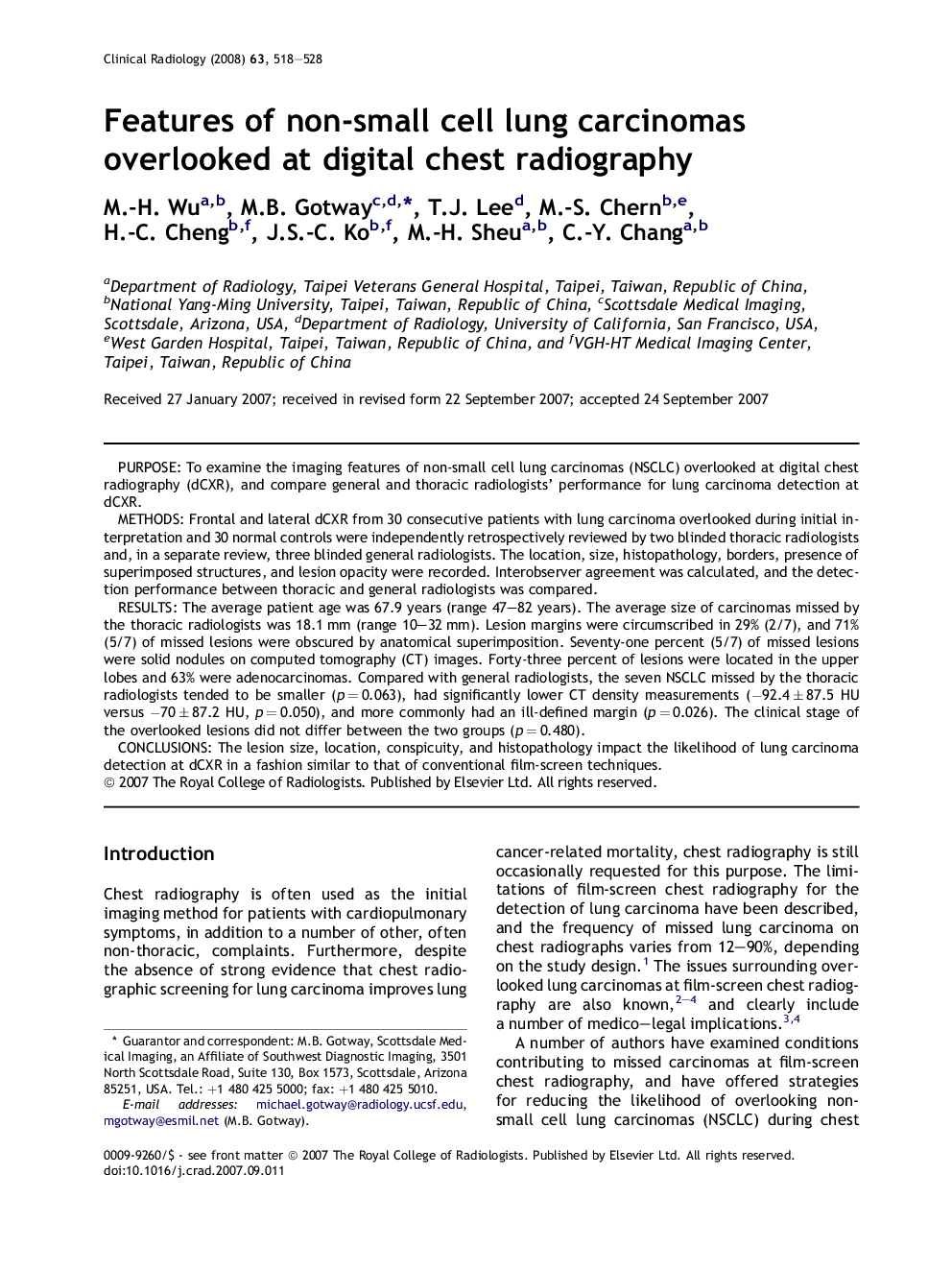| Article ID | Journal | Published Year | Pages | File Type |
|---|---|---|---|---|
| 3983240 | Clinical Radiology | 2008 | 11 Pages |
PurposeTo examine the imaging features of non-small cell lung carcinomas (NSCLC) overlooked at digital chest radiography (dCXR), and compare general and thoracic radiologists' performance for lung carcinoma detection at dCXR.MethodsFrontal and lateral dCXR from 30 consecutive patients with lung carcinoma overlooked during initial interpretation and 30 normal controls were independently retrospectively reviewed by two blinded thoracic radiologists and, in a separate review, three blinded general radiologists. The location, size, histopathology, borders, presence of superimposed structures, and lesion opacity were recorded. Interobserver agreement was calculated, and the detection performance between thoracic and general radiologists was compared.ResultsThe average patient age was 67.9 years (range 47–82 years). The average size of carcinomas missed by the thoracic radiologists was 18.1 mm (range 10–32 mm). Lesion margins were circumscribed in 29% (2/7), and 71% (5/7) of missed lesions were obscured by anatomical superimposition. Seventy-one percent (5/7) of missed lesions were solid nodules on computed tomography (CT) images. Forty-three percent of lesions were located in the upper lobes and 63% were adenocarcinomas. Compared with general radiologists, the seven NSCLC missed by the thoracic radiologists tended to be smaller (p = 0.063), had significantly lower CT density measurements (−92.4 ± 87.5 HU versus −70 ± 87.2 HU, p = 0.050), and more commonly had an ill-defined margin (p = 0.026). The clinical stage of the overlooked lesions did not differ between the two groups (p = 0.480).ConclusionsThe lesion size, location, conspicuity, and histopathology impact the likelihood of lung carcinoma detection at dCXR in a fashion similar to that of conventional film-screen techniques.
